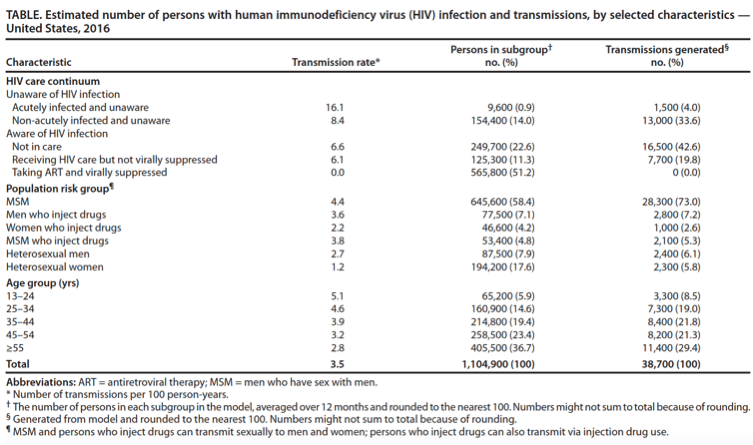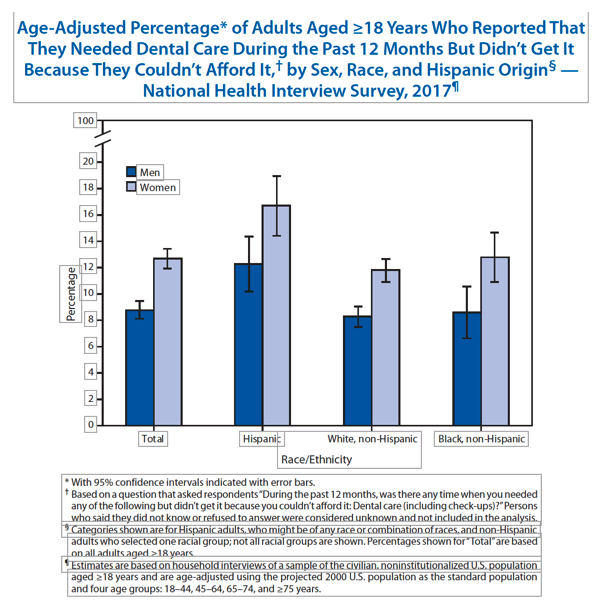 |
 |
 |
| |
Dental Care for HIV Difficult To Secure / Is Very Important
|
| |
| |
In 2017, more women (12.7%) than men (8.8%) reported that at some time during the past 12 months they needed dental care but didn't get it because they couldn't afford it
HIV TRANSMISSION ZERO: The rate was zero among those taking ART and virally suppressed
https://www.cdc.gov/mmwr/volumes/68/wr/pdfs/mm6811e1-H.pdf
The overall estimated HIV transmission rate in 2016 was 3.5 new infections per 100 person-years (Table). The rates of transmission decreased with progression along the HIV continuum of care. Persons who were acutely infected and unaware of their infection had the highest transmission rate (16.1), followed by persons who were non-acutely infected and unaware (8.4), those aware of their HIV infection but not in care (6.6), and those receiving HIV care but not virally suppressed (6.1). The rate was zero among those taking ART and virally suppressed. The percentage of all transmissions generated by each group was 4.0%, 33.6%, 42.6%, 19.8%, and 0%, respectively (Figure 1).


In 2017, more women (12.7%) than men (8.8%) reported that at some time during the past 12 months they needed dental care but didn't get it because they couldn't afford it. This pattern was consistent within each racial/ethnic group: Hispanic, non-Hispanic white, and non-Hispanic black. Among both men and women, Hispanic adults were most likely to have unmet needs for dental care because they couldn't afford it. Nearly 17% of Hispanic women could not afford to meet their dental care needs, compared with 12.8% of non-Hispanic black women and 11.8% of non-Hispanic white women; 12.3% of Hispanic men had unmet dental care needs, compared with 8.6% of non-Hispanic black men and 8.3% of non-Hispanic white men.
Source: Tables of Summary Health Statistics, 2017.
https://ftp.cdc.gov/pub/Health_Statistics/NCHS/NHIS/SHS/2017_SHS_Table_A-19.pdf.
Reported by: Debra L. Blackwell, PhD, DBlackwell@cdc.gov, 301-458-4103; Maria A. Villarroel, PhD.
|
| |
|
 |
 |
|
|